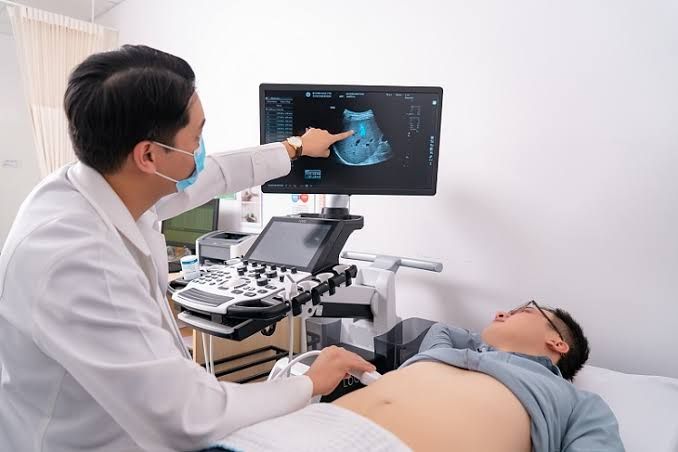
Acute on Chronic Liver Failure (ACLF)
Acute on chronic liver failure (ACLF) is a syndrome characterized by an abrupt and life-threatening deterioration in patients who already have chronic liver disease, such as cirrhosis. This condition is marked by the development of acute decompensation, which can manifest through various clinical events like ascites, gastrointestinal bleeding, hepatic encephalopathy, or infections. The key features of ACLF include:
- Underlying Chronic Liver Disease: Patients typically have pre-existing liver conditions, often cirrhosis.
- Acute Insult: An acute event triggers the rapid decline in liver function. Common precipitating factors include infections (especially bacterial), alcoholic hepatitis, and drug-induced liver injury.
- Multi-Organ Failure: ACLF is associated with one or more organ failures beyond the liver, which may include renal failure (acute kidney injury), respiratory failure, or cardiovascular instability.
The pathophysiology of ACLF involves intense systemic inflammation driven by pathogen-associated molecular patterns (PAMPs) and damage-associated molecular patterns (DAMPs). These factors lead to tissue hypoperfusion, immune-mediated damage, and mitochondrial dysfunction.
Classification of Acute Liver Failure
Acute liver failure (ALF) can be classified based on several criteria:
- Etiological Classification:
- Toxic: Most commonly due to acetaminophen overdose.
- Infectious: Viral hepatitis (e.g., hepatitis A, B, C), herpes simplex virus.
- Metabolic Disorders: Wilson’s disease or fatty liver disease.
- Autoimmune Conditions: Autoimmune hepatitis leading to acute presentation.
- Ischemic Injury: Poor blood flow to the liver due to shock or vascular occlusion.
- Clinical Classification Based on Duration:
- Hyperacute Liver Failure: Symptoms develop within 7 days of onset; often associated with acetaminophen toxicity.
- Acute Liver Failure: Symptoms develop between 8 days and 26 weeks after the initial insult.
- Subacute Liver Failure: Symptoms appear between 26 weeks and 6 months after the initial insult.
- Severity Classification:
- Severity can be assessed using scoring systems such as the Model for End-Stage Liver Disease (MELD) score or the King’s College Criteria for predicting outcomes and determining eligibility for transplantation.
- Prognostic Classification:
- Patients can be categorized based on their prognosis into groups that are likely to recover spontaneously versus those who may require urgent transplantation.
Overall, understanding ACLF and its classification helps guide management strategies and improve patient outcomes in those suffering from acute exacerbations of chronic liver disease.
Drugs That Can Cause Fulminant Hepatic Failure
Fulminant hepatic failure (FHF), also known as acute liver failure, is a severe and rapid deterioration of liver function that can occur due to various factors, including drug-induced liver injury (DILI). Certain medications are particularly notorious for causing FHF, either through direct hepatotoxicity or idiosyncratic reactions. Below is a detailed discussion of drugs that can lead to fulminant hepatic failure.
1. Acetaminophen (Paracetamol)
Acetaminophen is one of the most common causes of drug-induced fulminant hepatic failure. Overdose, whether intentional or unintentional, can lead to severe hepatocyte damage. The mechanism involves the saturation of the liver’s glucuronidation and sulfation pathways, leading to an accumulation of toxic metabolites such as N-acetyl-p-benzoquinone imine (NAPQI). This metabolite depletes glutathione levels and causes oxidative stress and cellular necrosis. It is estimated that acetaminophen-related toxicity accounts for approximately 46% of acute liver failure cases in the United States.
2. Isoniazid
Isoniazid, an antibiotic used primarily for tuberculosis treatment, can cause DILI leading to FHF. The risk increases with prolonged use or in patients with pre-existing liver conditions. The mechanism involves the formation of reactive metabolites that can bind to cellular macromolecules, resulting in hepatocyte injury.
3. Amoxicillin-Clavulanate
This combination antibiotic is associated with idiosyncratic DILI that can progress to fulminant hepatic failure in rare cases. The exact mechanism remains unclear but may involve immune-mediated reactions or direct toxicity from one of its components.
4. Methotrexate
Methotrexate is an antimetabolite used in cancer therapy and autoimmune diseases. Chronic use can lead to cumulative hepatotoxicity, which may result in FHF if not monitored properly. Liver function tests should be regularly assessed during treatment.
5. Nonsteroidal Anti-Inflammatory Drugs (NSAIDs)
Certain NSAIDs like diclofenac have been implicated in cases of acute liver failure, although this is relatively rare compared to other agents mentioned above. They may cause liver injury through hypersensitivity reactions or direct hepatotoxic effects.
6. Statins
While statins are generally well-tolerated, there are reports of statin-induced liver injury leading to acute hepatic failure in susceptible individuals, particularly when combined with other medications that affect liver metabolism.
7. Herbal Supplements and Alternative Medications
Some herbal products and dietary supplements have been linked to acute liver failure due to their unknown composition and potential for hepatotoxicity. For example, products containing kava or certain Chinese herbal medicines have been reported to cause significant liver damage.
In summary, several drugs can lead to fulminant hepatic failure through various mechanisms ranging from overdose (as seen with acetaminophen) to idiosyncratic reactions (as seen with isoniazid and amoxicillin-clavulanate). Awareness of these drugs is crucial for early recognition and management of drug-induced liver injury.
Grades of Hepatic Encephalopathy
Hepatic encephalopathy (HE) is classified into grades based on the severity of symptoms, primarily using the West Haven Criteria. The grading system ranges from Grade 0 to Grade 4:
- Grade 0: This stage is often referred to as minimal hepatic encephalopathy (MHE). Patients may not exhibit any noticeable symptoms, but subtle cognitive impairments can be detected through specialized testing.
- Grade 1: Symptoms may include mild confusion, slight personality changes, and decreased attention span. Patients might also experience sleep disturbances and minor behavioral changes.
- Grade 2: At this stage, patients show more pronounced symptoms such as disorientation to time and place, lethargy, and asterixis (a flapping tremor of the hands). There may be noticeable changes in behavior.
- Grade 3: This grade indicates severe hepatic encephalopathy. Symptoms include marked confusion, drowsiness, inability to stay awake, disorientation in space and time, and possible amnesia. Patients may exhibit involuntary movements or other neurological signs.
- Grade 4: This is the most severe form of HE and can lead to coma. Patients are unresponsive and may require intensive medical intervention.
Clinical Presentation of Hepatic Encephalopathy
The clinical presentation of hepatic encephalopathy varies widely among individuals. Common symptoms include:
- Confusion and disorientation
- Personality changes
- Erratic behavior
- Sleep disturbances
- Asterixis (flapping tremor)
- Severe drowsiness or lethargy
- Coma in advanced stages
Symptoms can appear suddenly or gradually worsen over time. They may fluctuate based on various factors such as diet, infections, medications, or other stressors affecting liver function.
Management of Hepatic Encephalopathy
Management strategies for hepatic encephalopathy focus on treating the underlying liver disease and reducing toxin levels in the blood:
- Dietary Modifications: A low-protein diet may be recommended to reduce ammonia production from protein metabolism. However, protein intake should not be excessively restricted as it can lead to malnutrition.
- Medications:
- Lactulose: This non-digestible sugar helps trap ammonia in the gut and promotes its excretion through diarrhea.
- Rifaximin: An antibiotic that reduces gut bacteria responsible for producing ammonia.
- Other medications may be used depending on individual patient needs.
- Treating Underlying Conditions: Addressing precipitating factors such as infections or gastrointestinal bleeding is crucial for effective management.
- Monitoring and Supportive Care: Regular monitoring of liver function tests and ammonia levels is essential. In severe cases where medical management fails, hospitalization may be necessary for supportive care or potential liver transplantation evaluation.
Grades of Hepato-Renal Syndrome
Hepato-Renal Syndrome (HRS) is classified into two types based on the progression of kidney dysfunction:
- Type 1 HRS: Characterized by a rapid decline in kidney function (doubling of serum creatinine to >2.5 mg/dL within two weeks). It typically occurs in patients with acute liver failure or decompensated cirrhosis.
- Type 2 HRS: A more gradual decline in kidney function that occurs over months rather than weeks. It usually develops in patients with chronic liver disease who have ascites that is difficult to manage.
Clinical Presentation of Hepato-Renal Syndrome
Patients with HRS often present with:
- Oliguria (decreased urine output)
- Elevated serum creatinine levels
- Ascites
- Jaundice
- Signs of liver dysfunction
Symptoms related to advanced liver disease are also common due to the underlying condition causing HRS.
Management of Hepato-Renal Syndrome
Management strategies for hepato-renal syndrome focus on improving renal perfusion while addressing underlying liver disease:
- Volume Expansion: Intravenous fluids can help improve renal blood flow; however, this must be done cautiously due to potential fluid overload.
- Vasopressors: Medications like norepinephrine can help increase systemic vascular resistance and improve renal perfusion pressure.
- Albumin Infusions: Administering albumin can help expand plasma volume and improve circulation dynamics in patients with HRS.
- Liver Transplantation Evaluation: For eligible patients with Type 1 HRS or those who do not respond adequately to medical therapy, evaluation for liver transplantation is critical as it offers a definitive treatment option.
- Dialysis Consideration: In some cases where kidney function does not improve despite treatment efforts, dialysis may be considered temporarily until a transplant can occur or until kidney function stabilizes post-liver recovery.
In summary, both hepatic encephalopathy and hepato-renal syndrome are serious complications associated with advanced liver disease requiring prompt diagnosis and management tailored to individual patient needs.







